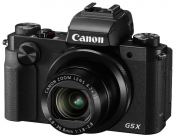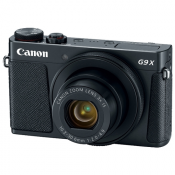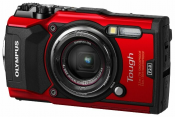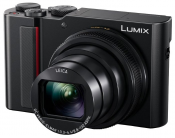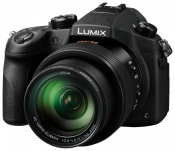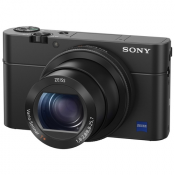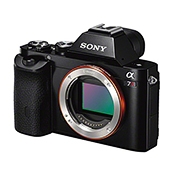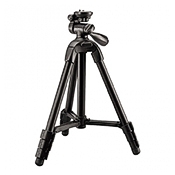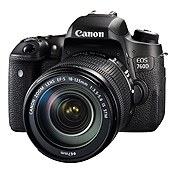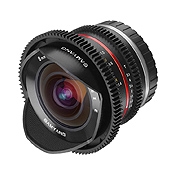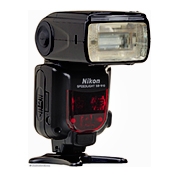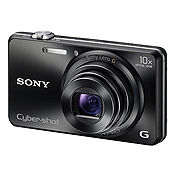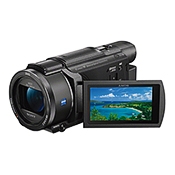Panasonic Lumix DMC-LX100
Short review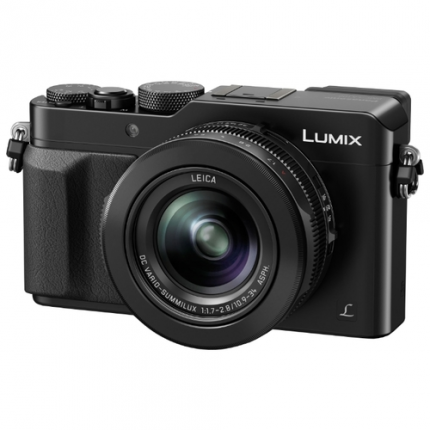
Buy Panasonic Lumix DMC-LX100
Panasonic Lumix DMC-LX100 specifications
Yandex.Market data
| Camera | |
| Camera type | compact |
| Lens | |
| Focal length (35mm equivalent) | 24 - 74.40 mm |
| Optical Zoom | 3.10x |
| Diaphragm | F1.7 - F2.8 |
| Lens name | LEICA DC VARIO-SUMMILUX |
| Number of optical elements | 11 |
| Number of groups of optical elements | 8 |
| Features: | aspherical lenses, low dispersion lenses |
| Matrix | |
| Total Pixels | 16.84 M |
| Effective Pixels | 12.8 M |
| The size | 4/3 (Four Thirds) (17.3 x 13.0 mm) |
| Crop factor | 2 |
| Maximum resolution | 4112 x 3088 |
| Matrix type | CMOS |
| Sensitivity | 100 - 3200 ISO, Auto ISO |
| Extended ISO values | ISO100, ISO6400, ISO12800, ISO25600 |
| Functionality | |
| White balance | automatic, manual installation, from the list |
| Flash | red-eye reduction, shoe |
| Image Stabilizer (Still Image) | optical, movable element in the lens |
| Shooting modes | |
| Macro photography | there is |
| Shooting speed | 11 fps |
| Timer | there is |
| Timer running time | 2, 10 s |
| Aspect ratio (still image) | 4:3, 3:2, 1:1, 16:9 |
| Viewfinder and LCD | |
| Viewfinder | electronic |
| Using the screen as a viewfinder | there is |
| Viewfinder field of view | 100% |
| Viewfinder Pixel | 2764000 |
| LCD screen | 921,000 dots, 3 inches |
| Exposition | |
| Excerpt | 60 - 1/16000 s |
| Manual setting of shutter speed and aperture | there is |
| Automatic exposure processing | shutter priority, aperture priority |
| Exposure compensation | +/- 3 EV in 1/3-stop increments |
| Exposure metering | multizone, center-weighted, point |
| Exposure Bracketing | there is |
| Focusing | |
| Autofocus type | contrasting |
| AF illuminator | there is |
| Manual focus | there is |
| Face Focus | there is |
| Minimum shooting distance | 0.03 m |
| Memory and interfaces | |
| Memory card type | SD, SDHC, SDXC |
| Image formats | JPEG (2 levels compressed), RAW |
| Interfaces | USB 2.0, HDMI, Wi-Fi |
| Food | |
| Battery format | your own |
| Number of batteries | 1 |
| Battery capacity | 1025 mAh or 270 photos |
| Video and sound recording | |
| Video recording | there is |
| Video recording format | AVCHD, MP4 |
| Video codecs | AVC / H.264, MPEG4 |
| Maximum video resolution | 3840x2160 |
| Maximum video frame rate | 60 frames / s |
| Maximum frame rate when shooting HD video | 50/60 fps @ 1280x720, 50/60 fps @ 1920x1080 |
| Video recording time | 60 minutes |
| Sound recording | there is |
| Other functions and features | |
| Digital Zoom | 4x |
| Additional features | tripod mount, orientation sensor |
| Equipment | rechargeable battery, battery charger, AC power cord, USB cable, lens cap, lens cap string, hot shoe cap, flash, flash case, camera shoulder strap, CD |
| Additional Information | built-in stereo microphone |
| Sales start date | 2014-10-31 |
| Dimensions and weight | |
| The size | 115x66x55 mm |
| Weight | 351 g, without batteries; 393 g, with batteries |
Opinions from the Panasonic Lumix DMC-LX100
Yandex.Market data
Advantages:
Large matrix 4K video recording up to 15 min and without overheating. A fast zoom lens with the most popular focal length and also very sharp. Small dimensions of the camera. Very good value for money / functionality / quality. Presence of shoe and thread for filters. Good viewfinder. The controls are just a song! Not noisy for its segment.
Disadvantages:
Medium jpeg No dust / moisture protection Doesn't charge from USB. Autofocus is not confident (mostly, this is a problem when recording video). Strange battery indication. There is no stabilization when recording video in 4k (but at the time of the release of this camera, no one had it). WI-fi connection quality
Comment:
I bought a camera for travel, I was worried about the lack of moisture protection and charging from usb. But it does not happen that everything is in one device at once, and even for a reasonable price. The ratio of the carcass to its capabilities and the lens to the price is simply amazing! A similar kit with interchangeable optics costs almost 2 times more and will be slightly heavier and more overall. All its shoals, with the exception of the naughty autofocus, can be bypassed. Buy a dust and moisture-proof box that will add the possibility of underwater shooting (which any built-in moisture protection will not give), buy a usb charger for 2 batteries at once (in a tea shop), buy a steadicam that compensates for 100% shaking in 4k video and will do it 10 times better than any built-in stabilization. You can also buy a teleconverter and a shirik and thereby increase the focal length (thanks to the thread on the lens). If you use only manual settings, and this camera is clearly not for beginners and just provokes everyone to use them, then RAW photos are no worse than many top-end mirrorless cameras with micro and aps-c matrices. As for autofocus, it is clearly not worse than many others, only sonu is better in the class. In general, a very solid fotik, with great expansion possibilities and easy to use (especially in mittens, since almost all settings are not in the menu but on the case). And the fact that the screen is not rotatable and not touch-sensitive is not a problem, the sensor still does not work with gloves, and as I said, all the settings on the case. And if you connect your phone via wi-fi, it will give much more opportunities than a rotating screen and, by the way, add geotags. I think its closest competitor is the sony rx100, this camera is simpler, more compact and somewhat more convenient (the same autofocus). But panasonic lx100 takes better pictures, more tenacious and gives more opportunities to the photographer. I went through fire and water with him, mountains and snow, frosts down to -30 and I can safely recommend him for hiking and traveling.
February 2, 2017, St. Petersburg
Advantages:
- photo quality is comparable to entry-level DSLRs (DD and BB are not worse) - availability of RAW format - control is more convenient than on amateur cameras with interchangeable lenses (aperture and shutter speed selection knobs like on film, many programmable buttons) - bokeh is better than cropped ones DSLRs / mirrorless cameras with whale lenses - the presence of a thread for light filters - good stabilization - fast and accurate autofocus when taking photos - high-aperture lens - digital "indication" of the field of focus, the so-called "zebra" - presence of a viewfinder - creating a photo from 4K video in a camera - serial shooting in RAW 11 fps - Wi-Fi
Disadvantages:
- the battery (250-300 shots without a flash) sits down faster than a DSLR - no protection against splashes and dust (even when it's drizzling - you can't take pictures) - non-rotatable and non-touch display - 75 mm is not enough in teleposition, but in conjunction with a 12 megapixel matrix not particularly cropping - inconvenient location of the focusing ring (very close to the "carcass") - autofocus when shooting video - the display glass is easily scratched, after buying immediately glue the film - no high-speed video recording of 100 fps at least in HD quality (this is implemented in the younger LX7, superhums FZ200, FZ300 and FZ1000, why they didn't do it here - it's not clear, I think they could have added them in the firmware, but they never came out) - the built-in panorama mode glues badly - the strobe and display delay of the electronic viewfinder - dust particles hit on the matrix, or on the lenses (I'm not critical, they are practically invisible in the pictures and can be cured for 2 thousand rubles in a photo workshop)
Comment:
I decided to add my review a couple of years later) Fotik took a DSLR to replace it, because I was tired of pulling lenses and faced with the fact that they were not allowed to shoot with a simple DSLR with a whale lens, perceiving me as "leading professional photography."In the person of this photo monster, I got a full-fledged replacement for an entry-level DSLR without losing quality in photos, which others perceive as a "soap box". I sold a DSLR and lenses, and since then I have never regretted it. The disadvantages of the LX100 are not critical for me. Why?! - just look at the pictures! Feel free to buy and enjoy the photos of your life moments taken with LX100! Even if a camera comes out that will be better for me in terms of the balance of all parameters, I will think for a very long time whether to change my old friend! A couple of details that you can not read: 43mm filters are hard to find, in addition to the standard ones, I decided to indulge in a Chinese fish-eye nozzle - it turned out to be quite nothing (the fish-eye was not a luxury at all on the SLR). Do not take a gradient - it will be useless. Progress in mobile cameras is obvious, and in the summer I decided to compare my wife's iPhone 7 and my LX100 in the same conditions, purely for interest. I was surprised by the result, because in all cases you can't look at the iPhone pictures without tears, in comparison with the LX100, of course (except for the landscape during the day, and then only on the phone screen). In terms of detail, color rendering, noise, the LX100 is a couple of heads higher, not to mention bokeh, convenience, etc. parameters "physically" inaccessible to phones. The most offensive technical miscalculation of Panas, which manifested itself after a couple of years of operation - the ingress of dust, either the matrix or the lenses (this also did not work for me), this can be solved by cleaning in the workshop, but I have scored so far. When I give it to my relatives who do not understand the meaning of manual aperture and shutter speed settings, I simply turn the control wheels to "auto" mode and we get the usual auto mode, suitable for everyone) For 3 years I am insanely happy and I am not going to change the LX100 for anything!
November 8, 2017, Dolgoprudny
Advantages:
Wifi, focal length, aperture, stabilizer, viewfinder thought that it would not be useful, but in the end I use it all the time. Low noise matrix.
Disadvantages:
Nfc- does not open the application for me, but opens the site. And through the application in the phone, the Rav cannot be reset. But for me this is not a minus, since I no longer take pictures in Rav.
Comment:
It used to be 5mk2. There were a lot of glasses, but I came to the conclusion that I needed 28-75 / 2.8 for every day. I never saved up for it. I took lx100, tired of carrying the sumische for a walk. I thought it would be like a second camera. As a result, Mark completely replaced me, and I sold him. But he is always with me, and I don’t take pictures anymore. chamber zipeg is perfect for me. Below is a photo without processing.
July 24, 2017, Moscow
Advantages:
+ Compact size for such a photo-monster. + Full range of settings for professionals: manual control of shutter speed, aperture, ISO. Histogram, zebra, focus pick. + Sharp, high-aperture optics with the most necessary set of focal lengths (about 24-75mm), no distortion, with a good stabilizer. Pretty nice bokeh for such a small lens. Manual focusing capability. + Excellent RAW photo quality. + Working ISO up to 6400. The increased 12800 and 25600 are of little use, but bearable. + Built-in additional functions like HDR, Timelapse, Stop-Motion, panorama shooting. + Built-in NFC modules, Wi-Fi. This enables remote control from a smartphone / tablet. It is also possible to upload photos to a smartphone or social network. + Decent 4K video quality.
Disadvantages:
- Very uncomfortable grip. - Quite a toy look. - A very long retractable lens trunk, which, moreover, cannot be forcibly hidden, for example, when viewing a photo or opening a menu. - Slow zoom. - Inconvenient exposure control. - Not very convenient viewfinder eye (although its very presence is a plus). - Weak battery. - Lack of GPS (although there is a location binding via a smartphone). - Inconvenient file cataloging on the card: photos and videos are scattered in different folders in deep attachments. - Disadvantages when shooting video: jerky autofocus, flickering when zooming, jelly effect when panning (especially in 4K), small crop (8%) when shooting in 4K.
Comment:
The camera is just gorgeous. I came to replace my 5DM3 when I was finally tired of carrying one and a half kilos in my hand. I chose the camera from reviews on the Internet and did not fully believe in its coolness until I got it in my hands. In fact, almost all of the disadvantages described are just compromises. Still, such a compact form factor cannot cover everything. The main thing that is hard to put up with is a very uncomfortable grip and exposure control. After the "mark", which lay in the hand like a glove and which has all the control with one movement of the finger, it is difficult to adapt. Also would not recommend this camera to anyone looking to take it for video. Despite a decent 4K picture, in order to get good shots, you will have to use tripods, rigs, sliders, steadicams to avoid a rolling shutter. In addition, focusing is inconvenient in video mode, and the picture flickers during zooming. Just accept that this CD was not created for professional videography. Despite the huge number of disadvantages I have noted, I recommend this camera to everyone: both amateurs and professionals.
June 3, 2015, Moscow
Advantages:
1. Good fast optics with very convenient focal lengths. 2. Good picture quality (except ... see below). 3. Large matrix. 4. Compactness and weight, excellent assembly. 5. Management (especially the frame format switch). 6. Good video. 7. Removable flash included.
Disadvantages:
1. Auto white balance, especially in low light conditions, at dusk: exaggerated blue and generally oversaturated colors. Often unimportant skin tone. 2. There is no connector for an external microphone (built-in is not bad, but ...). 3. Problems with optics (see below).
Comment:
I took it as a replacement for a DSLR for every day with the hope of high-quality footage (I don't do video, although I have no complaints about the video). Everything is fine up to about 30mm focal length. Quite quickly, a problem emerged, which is being discussed in foreign forums (and many are renting out the purchased device): soap on a "long" focal length (in my case, about 70-75 mm EGF). There are some problems with the operation of either the autofocus sensors, or the mechanism itself: as a result, the image is blurred as in front focus (and this is with the contrast method and at diaphragms covered to the optimum around 4-5.6). Sometimes you can see that the camera is aimed not at "infinity", but somewhere closer. Exceptions are plots when it is impossible to look closer (for example, the top of a tower, a bell tower, a freestanding tree, etc.). Perhaps this is not a bug, but a feature (useful for filming concerts with a soloist: the camera will obviously aim at him, and not at the backdrop), shooting portraits, etc. at distances of about 5-10 m, does not reveal problems. But you need to be careful and careful when buying, check the sharpness when shooting landscapes at a long time. In general, there is a problem (how common is a question). Otherwise, everything is relatively in line with expectations at a traditionally overpriced (mainly due to 4k video). If Nikon had announced his DL-series a little earlier, I would have thought hard what to buy.
February 27, 2016, Ryazan
Advantages:
I don't understand you people at all !? This CD is just lovely! -Weight -Focus rapid -Zoom optical (analogue 24-70) -Ease of use / wifi / 4k -Picture quality is excellent
Disadvantages:
The battery is rather weak, it is decided by purchasing an additional one or 2x (how many to whom).
Comment:
I sold the DSLR and all the glasses, I just got tired of carrying it all with me. This camera is more than enough for the annals of travels and other vital moments. I recommend!
6 July 2018, Moscow
Advantages:
High-aperture optics. Crop 2. Possibility of manual control of photo and video shooting. Changing parameters while filming. Ease of control, all buttons and control dials are reassignable to the desired functions. Video!!! Once again, video! No overheating. 4K which is already relevant. High quality time-lapse. The presence of a viewfinder. Flash hot shoe. Control of all functions of the device via wi-fi.
Disadvantages:
Battery capacity (not critical) Not a touchscreen, but there was none in the entire LX line. The lens is not dustproof and waterproof.
Comment:
A very good camera and a wonderful video camera with 4K on board. Convenient focal length 24-70 mm. I have been actively using it for several months. Ideal as a second general-purpose video camera with wi-fi control. In good lighting, you can use the IZoom function, which increases the focal length up to 150 mm based on the FF.
April 30, 2018, Moscow
Advantages:
large matrix and good image quality convenient control on the camera body compactness and lightness the ability to screw on the filter all possible modern functions good autonomy when working through a peephole good video quality
Disadvantages:
no rotary screen zoom is too small
Comment:
I am satisfied with the camera, I have been using it for about a year now I get excellent photos sometimes autofocus is wrong in macro mode, but manual focusing works great at difficult moments of shooting, the autonomy of the camera is excellent when the screen is off, all possible functions and settings are there
May 25, 2017, Voronezh
Advantages:
Ultra HD video is amazing! Night shots are great! And daytime too! Lightweight, compact.
Disadvantages:
The lack of the ability to connect an external microphone, although its own is good, but still. Non-rotatable display. Expensive Flag Cards.
Comment:
The device replaced the Sony Alpha A65 (with three lenses and a bunch of accessories, everything has already been sold). Remarkable luminosity! Convenient and compact. For fans I just recommend, Well, the video, stunned! Of course, only from a tripod, or a monopod.
21 March 2015
Advantages:
+ Brilliant 4K video, even with a chroma key. + Overall optimal focal length range + Fast lens, F1.7 at 24mm - fantastic. + Abundance of manual settings, both software and mechanical "levers" on the case + Compact battery, it is enough for almost 2 hours of video in 4K, yes, you can switch the device to the service mode and remove the limitation of the recording duration. + Sane work of automation in autoexposure, but it's better to play it safe and turn the exposure wheel a little to minus + Gives quite decent photos, good rate of fire + You can connect via phone via WIFI, and even poke at the focus point on the screen + There is a thread for filters + You can "half-press "hit the focus at the desired point and with further video recording it will remain there.
Disadvantages:
- Autofocus in video mode is not predictable, it would even seem that the focus mode on faces, but it crawls from eye to eye, i.e. where you just need to calm down and not make unnecessary movements. - Meeeeeeeeeeeeeeeeeeedleeeeeeeeeeeeennyyyyyy zoom, it's just wildly enrages when a short period of time you need to collect a lot of diverse video. - When going to sleep, the trunk retracts and, accordingly, the focal lens is reset to a minimum. When awakened, it does not return to its original position. - The so-called "MagicZoom" or picture enlargement for visual adjustment of the focus area works exclusively in idle mode; during video recording, you can navigate only by focus-picking.- In manual focusing, there is a selection of contours (focus-picking), but with active movement, the system slows down and does not provide timely information, so there is no need to hope that you will be able to manually adjust to the situation. - Very weak built-in stabilization. - I would like a larger focal point at the long end. - No 25p when working in service mode, only 24 or 30 fps. - Very unstable WiFi connection (often falls off) and it is impossible to adjust the shutter speed and aperture through the phone, only ISO, and even the picture is not full screen. - After the start of the recording, if you do not touch the device, after a minute or two the screen itself dims the brightness and it is difficult to determine from it whether there is overexposure at the moment or not. - No touchscreen or rotary screen. - The tripod thread is located in the center, changing the battery only after removing the platform. - A third-party external flash (in my case Canon 480) works only in single shots, and in order for it to fire it is necessary to turn off the silent mode, the phot will beep when the focus is confirmed and shooting, respectively. - There is no microphone input, although it would seem that with such an abundance of physical buttons it was somehow strange to pinch the connector.
Comment:
The device was taken primarily as a second stationary uncontrolled video camera, thanks to the ability to shoot in 4K and then crop the picture to the desired angle during editing. I was very surprised by the battery survivability in continuous video recording. I even seriously thought to switch completely to it, tk. the video quality is better than in my Canon 70d and the dimensions allow it to be carried everywhere, but there is an important caveat: this Panas is not intended for active reportage work, because it does not allow you to quickly adjust to the situation and this is due to both poor autofocus and slow zoom. Optimal mode: set to general, zoom in on the focal length, half-press off focus on the desired object, start recording and so on every time, or, of course, rely on the "intelligible" autofocus and go to water. I didn't like the Full HD quality at all. The 4K material itself is heavy (I had to take a 128GB card), it turns and turns on the computer only through a proxy. I would say the LX is primarily good for hiking and travel, thanks to its tiny size and the fact that it has everything you need on board. It is also suitable for unhurried shooting, where each take will be verified and there is time for adjustment, or with a second general camera. Once I only took it to shoot in the dancers' training hall for a dynamic video, no, this is torture. P.S. On Ali I took two batteries and a Batmax USB charger, the flight is normal.
October 30, 2018, Inkerman
